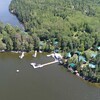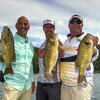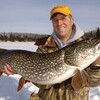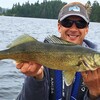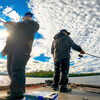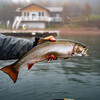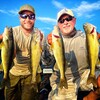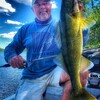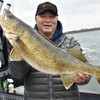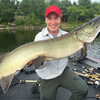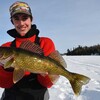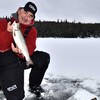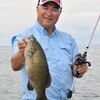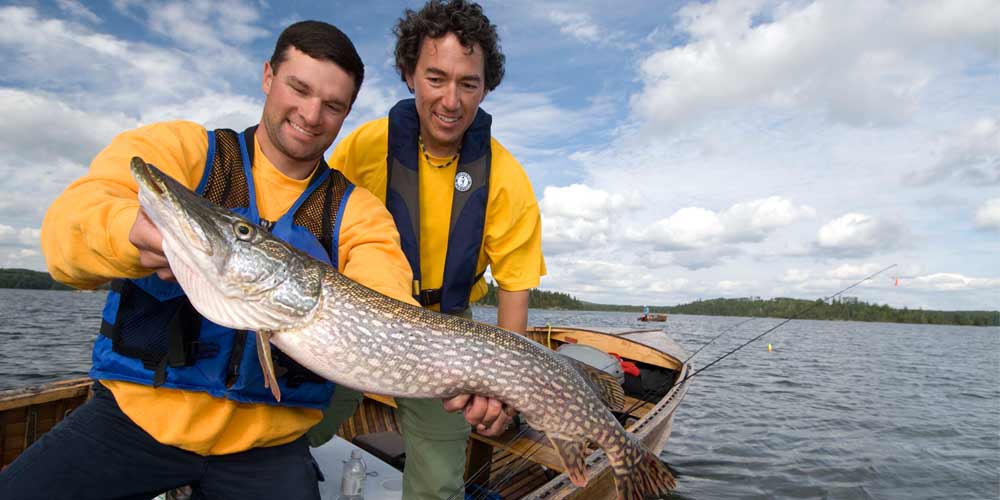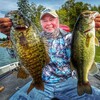
7 Ways to Land Your Catch
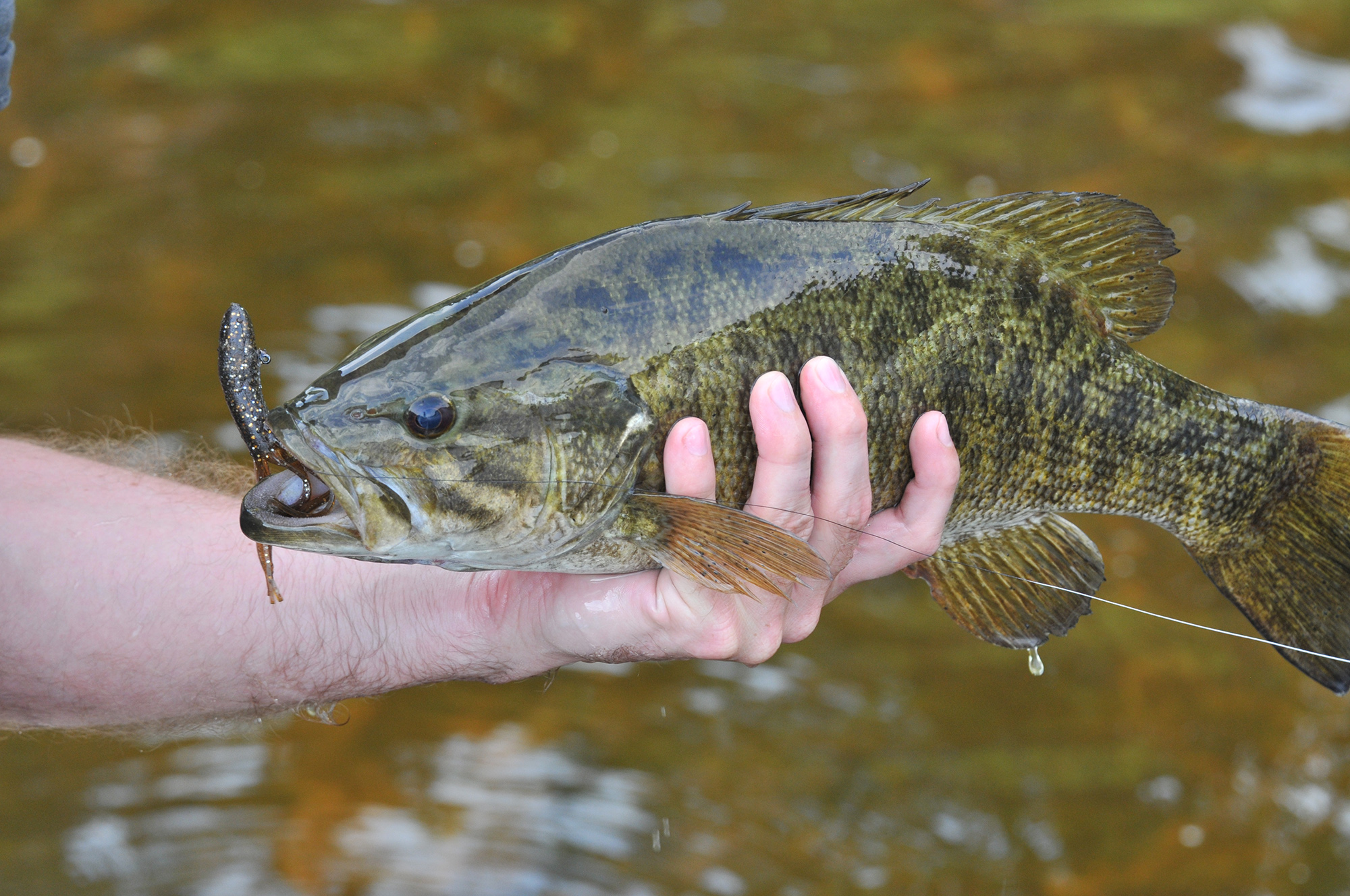
You finally hooked the fish of your dreams. You made the perfect presentation and felt the fish take. Your hook set was rock solid. Your knots held strong and you played the fish with just the right blend of power and finesse. The fish fought valiantly but in vain. All that’s left for you to do is close the deal by landing it. Now the real fun starts.
Everyone who fishes has a story or two about losing a fish just when it seemed to be in the bag.
“The hooks got caught on the net and pulled out.”
“My line broke as I was lifting the fish into the boat.”
You get the idea. Improper landing techniques are one of the biggest causes of premature fish releases, but it doesn’t have to be that way. With a little patience and a little know-how, landing fish doesn’t have to be a nail-biting experience.
1. Netting
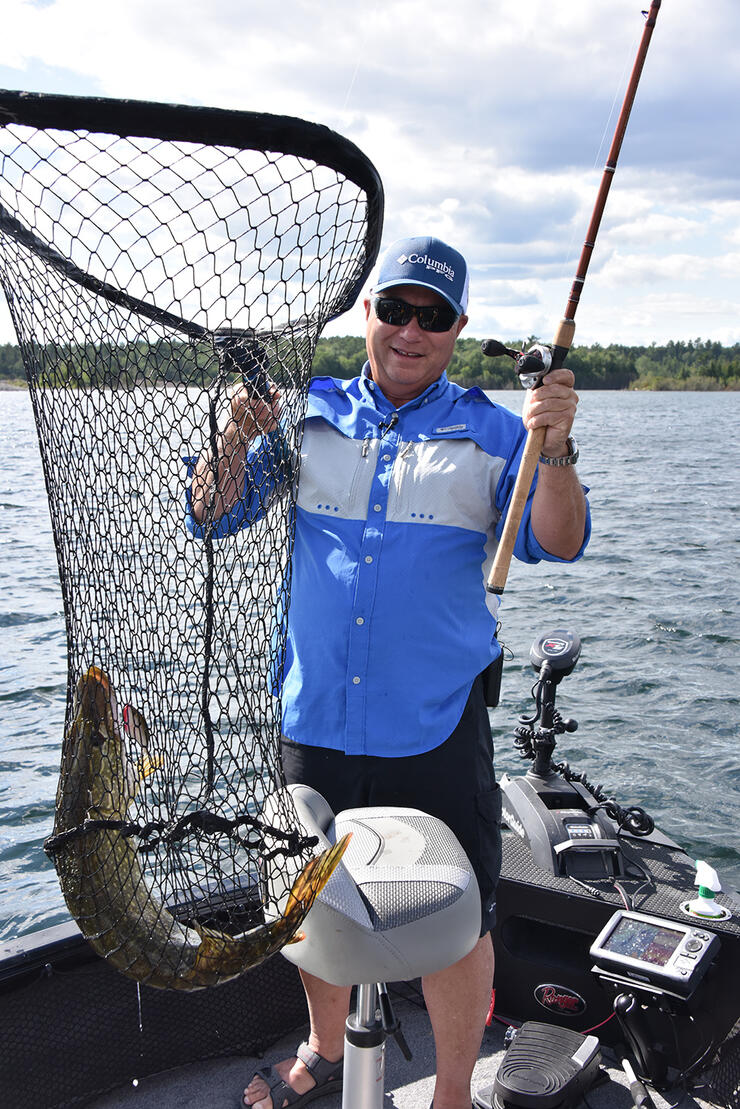
Pros
- Landing nets are extremely effective for trapping and holding fish
- Nets extend your reach making them ideal for use from shorelines, piers or high-sided boats
- Nets come in sizes and styles for any type of fish
- Nets keep fingers away from teeth, hooks and spiny fins
Cons
- Nylon mesh can remove a fish’s protective slime coating and can cause injury to fins and eyes
- Nets can snag hooks when landing fish
- Nets are bulky and can be difficult to transport and store
- Mesh bags must be replaced periodically
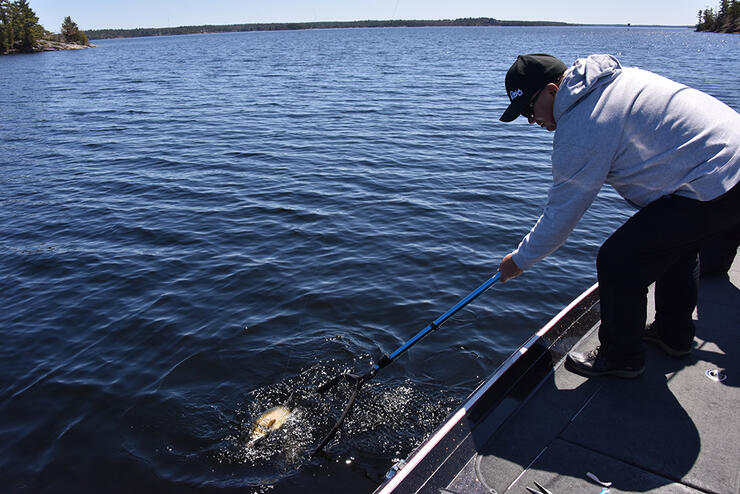
Netting Tips
- Choose a net with soft cotton or rubber mesh
- Don’t try to “scoop” fish into a net. Place the net in the water and guide the fish into it
- In still waters, net your fish head-first. In rivers, hold the net behind the fish and slowly drop the fish back into it
- Don’t rush. Wait until the fish has tired before trying to net it
- If you plan to release your fish, keep it in the water. Use the net to hold the fish while you remove the hooks
- Use a net that is large enough for the species you are fishing for
- For long-bodied fish like pike or muskie, be sure to use a net large enough for the biggest fish you expect to catch. Another option is to use a cradle-style net.
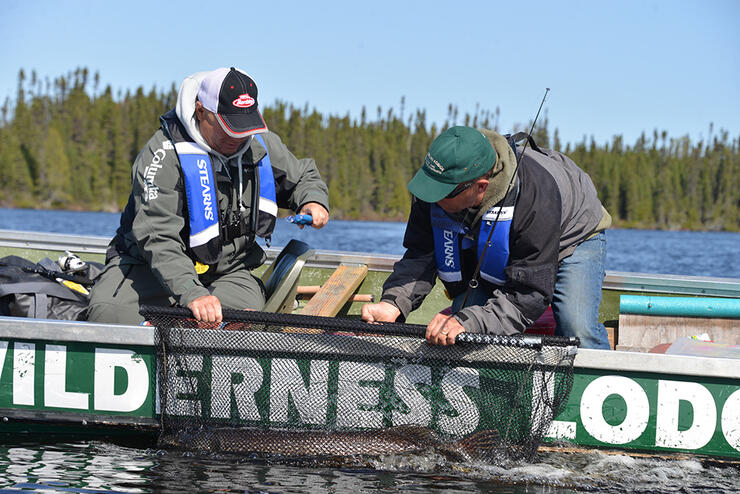
2. Beaching
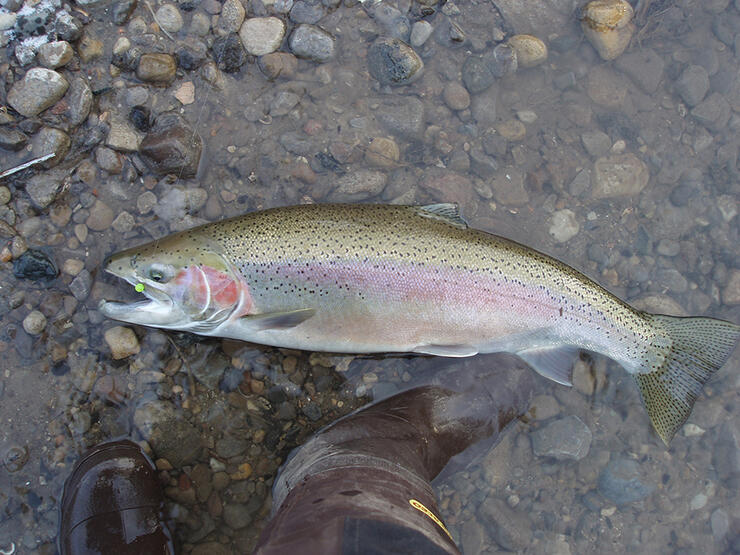
Pros
- Eliminates the need to physically touch the fish
- If done correctly, the fish remains supported by water
- No chance of snagging hooks on the landing gear
Cons
- Sand and gravel can scrape slime from fish if it is dragged onto the shore. Particles can enter gills causing potentially fatal injury
- Fish must be near exhaustion before landing
- Angler usually needs to enter the water to beach a fish
- The line can become tangled around the angler’s feet and legs if the fish makes a final run
- If a hook or lure pulls out it may whip around wildly, possibly striking an angler
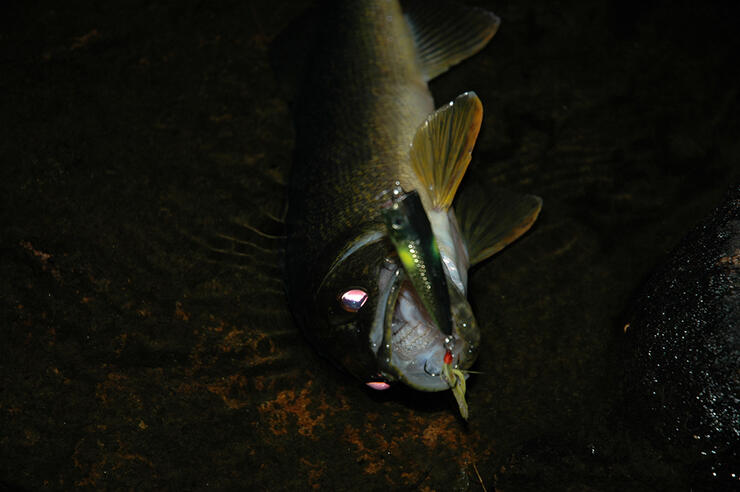
Beaching Tips
- Play a fish out before trying to beach it
- If possible, grab fish without entering the water
- Don’t drag fish onto the shore. Guide it into the water a few inches deep to allow for a cushion between the fish and the bottom
- Straddle the fish with your feet to keep it under control
- Use pliers or hemostats to quickly remove the hook or lure
- Try to beach fish on firm bottom areas. Angler or fish movements in shallow silt or mud-bottomed areas will cause sediments to become suspended, allowing them to enter a fish’s gills
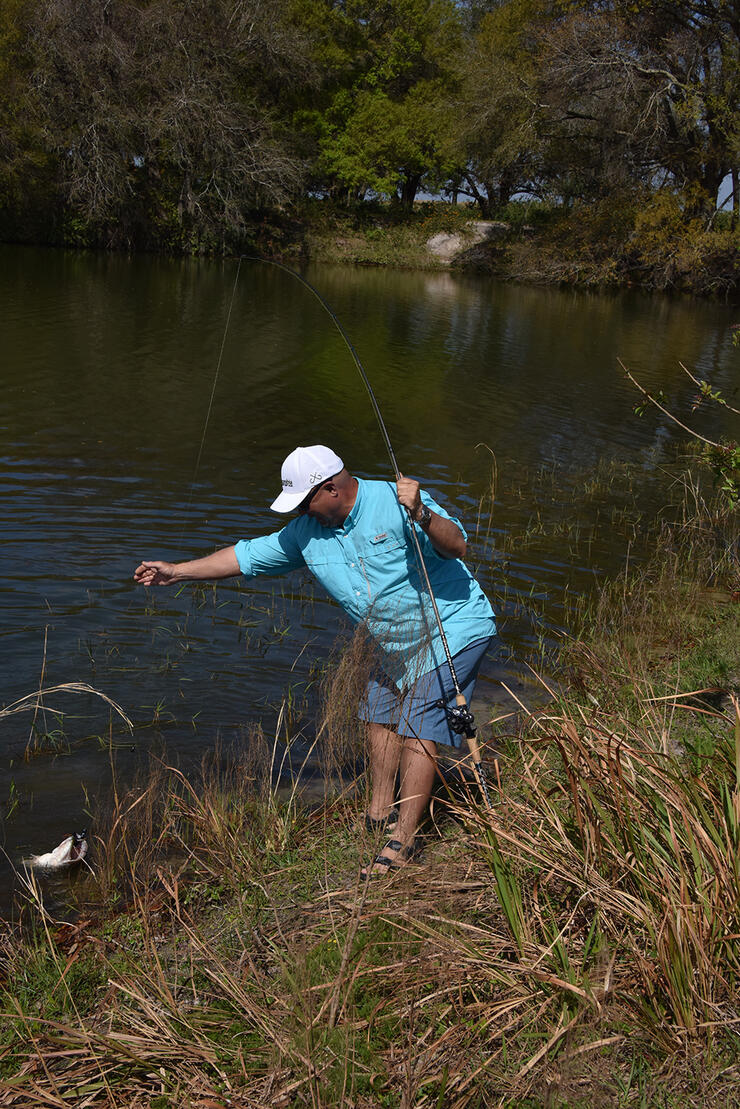
3. Lipping
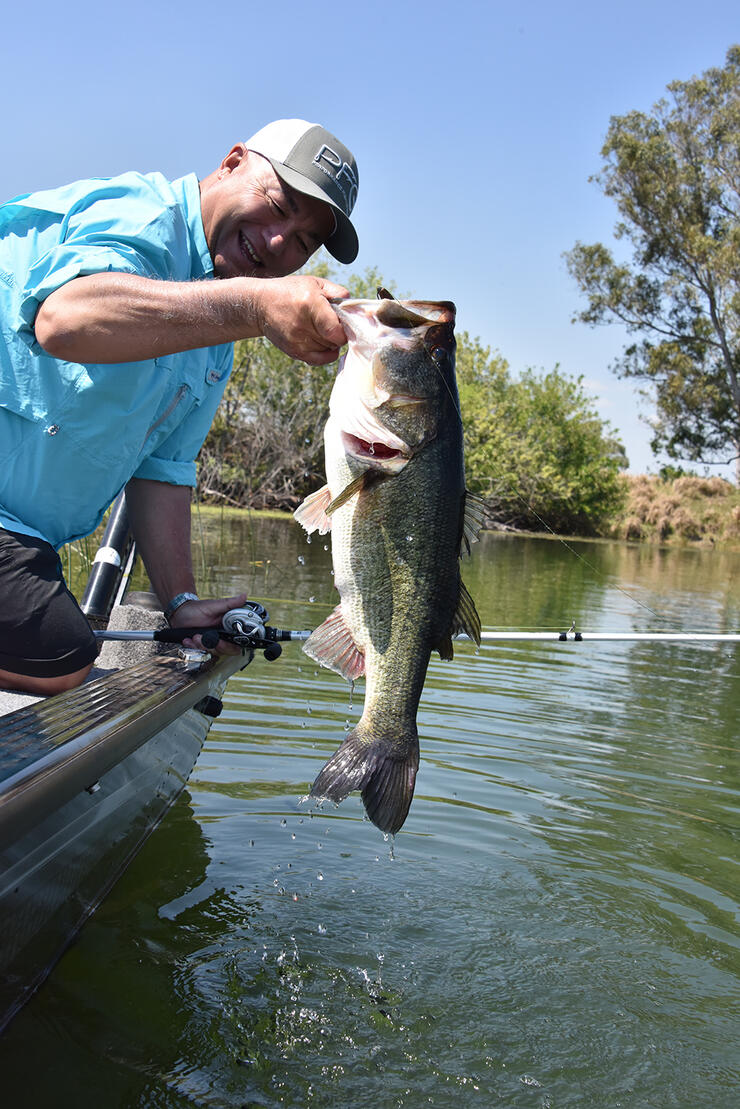
Pros
- Minimizes angler contact with a fish’s protective slime coating
- Provides a secure method of controlling fish at the boat or bank side
- Hook removal is faster and easier when a fish’s head movements are restricted
- Allows fish to remain almost entirely suspended in water when removing hooks
- Gives angler a free hand for using release tools
- Easily accomplished by a single angler
Cons
- Hands are put in close proximity to hooks
- Can cause injury if a fish is held horizontally by the lip
- Fish must be tired out before being landed
- Can only be used on smaller species like bass or some panfish
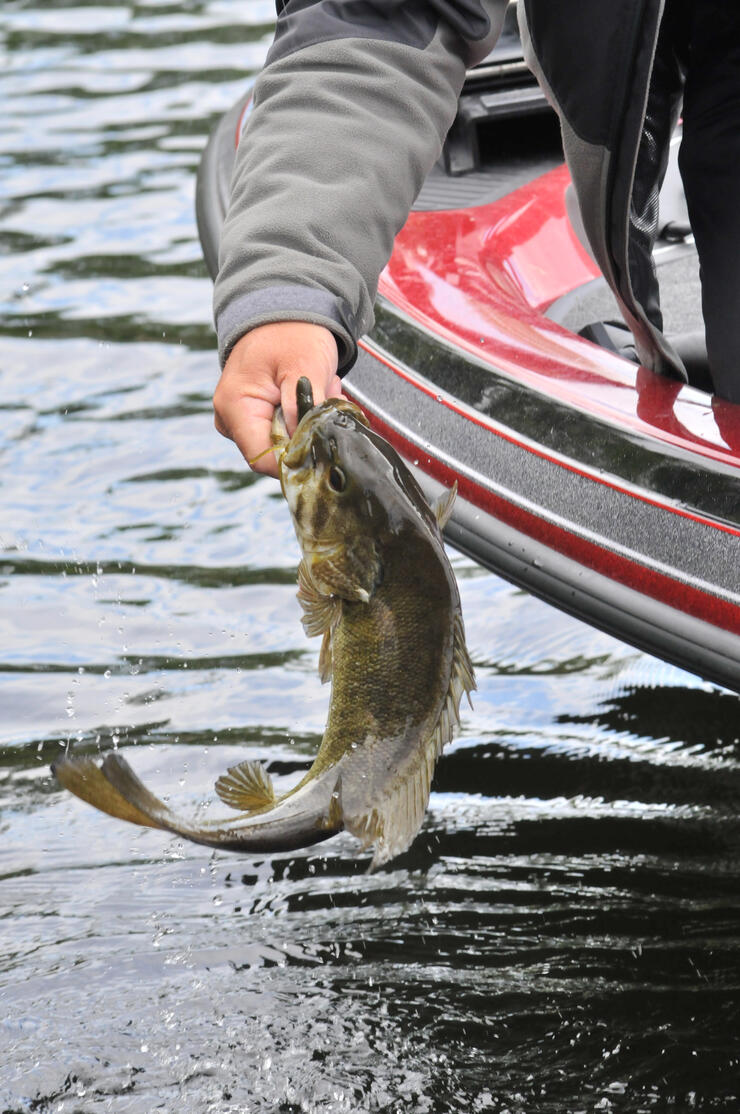
Lipping Tips
- Insert thumb into fish’s mouth and squeeze lower jaw between thumb and fingers
- Lipping is safest when using jigs or single-hooked baits. Be extremely careful around treble hooks
- Hold bigger fish in the water. If lifting them, use your free hand to support them by the belly
- When releasing lipped fish, gently place them back into the water before letting go of them. Dropping or throwing them can cause injury
- Minimize the time a fish is held out of the water
4. Palming
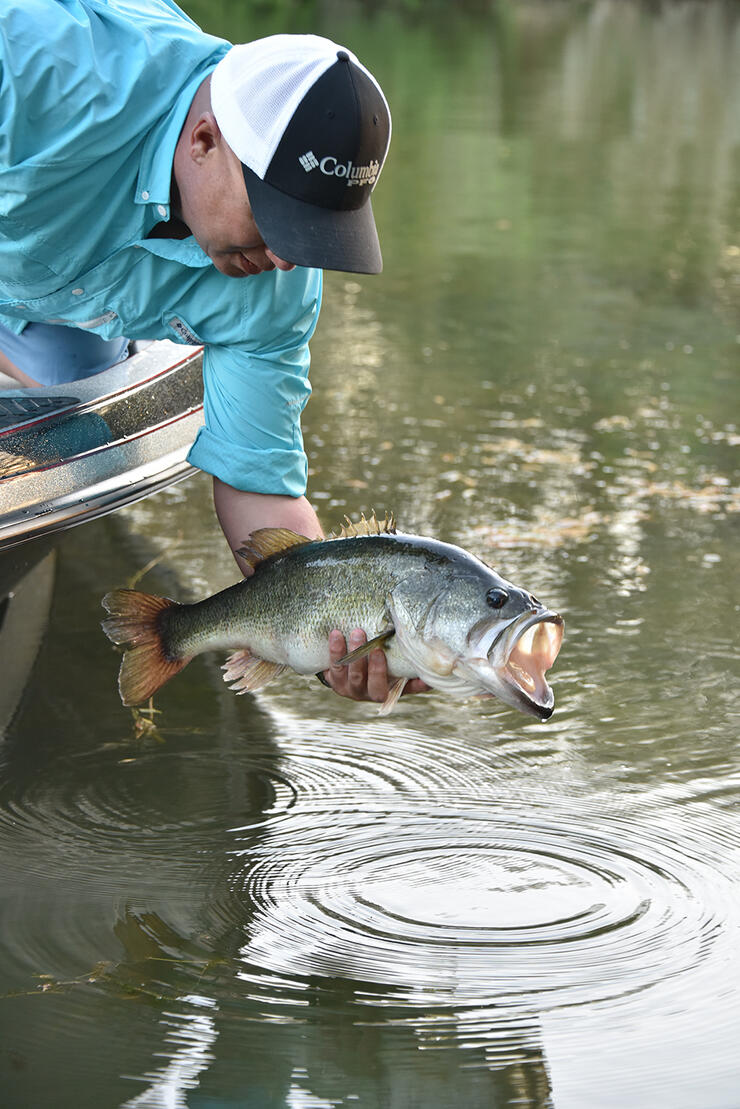
Pros
- Palming appears to calm or slightly immobilize fish
- A good alternative to lipping fish that are hooked on multi-hook baits
- Offers good support to fish that are lifted from the water
- Hooks can be removed while fish remains in the water
Cons
- An angler has little control and may be prone to drop a palmed fish
- Fish must be completely played out before being palmed
- Not effective on long or extremely broad fish
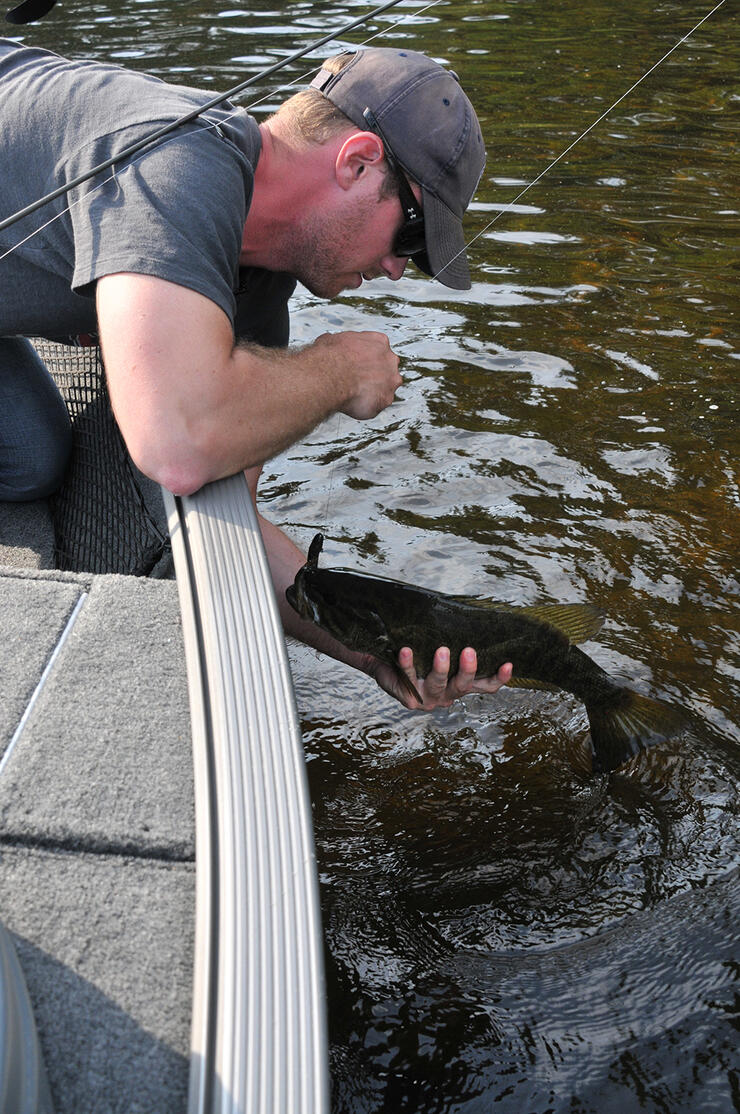
Palming Tips
- Cup your hand and gently place it under the fish’s belly. Grip lightly and lift the fish straight up
- If removing the fish from the water, re-grip it to eliminate the chance of it falling from your grasp
- Palming works best on fish like bass, walleye and panfish. Other landing methods are better for other types of fish
- When releasing fish, place them back in the water and let them swim out of your hand
5. Grasping
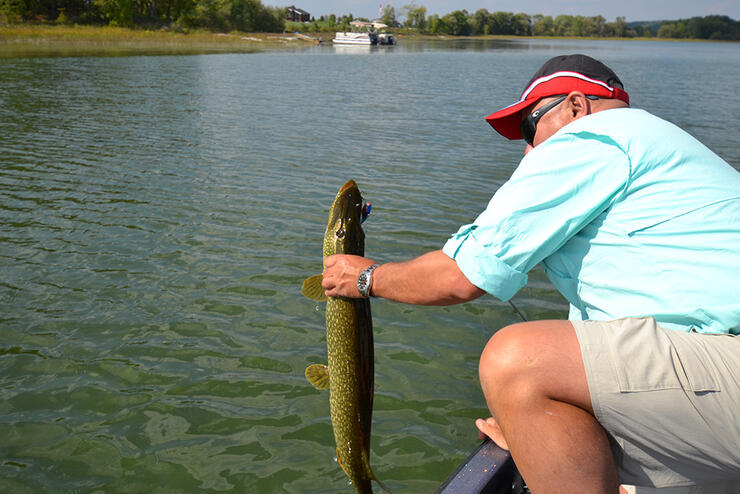
Pros
- Effective for most freshwater species
- Can be adapted to various fish shapes and sizes
- Offers great control for hook removal and lifting fish from the water
- Easy to execute
Cons
- Sharp spines and gill covers can cause cuts to hands and fingers
- Gripping too tightly or squeezing on gill plates can severely injure fish
- Anglers with small hands may have difficulty grasping larger fish
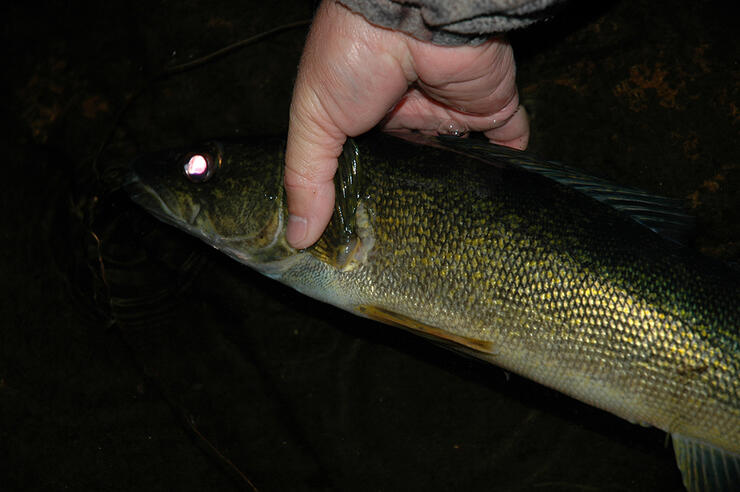
Grasping Tips
- Grasp fish by the body, just behind the gill covers
- Use the heel of your hand to “comb” down along the fish’s back to flatten dorsal fins
- Hold the fish firmly, without using excessive pressure
- If a fish begins struggling, hold it down over the water, release your grip and use your rod to guide it back for another try. Don’t try to squeeze harder in an attempt to regain control as this will only increase the risk of harming the fish. Besides, it rarely works and nine times out of ten the fish will end up being dropped
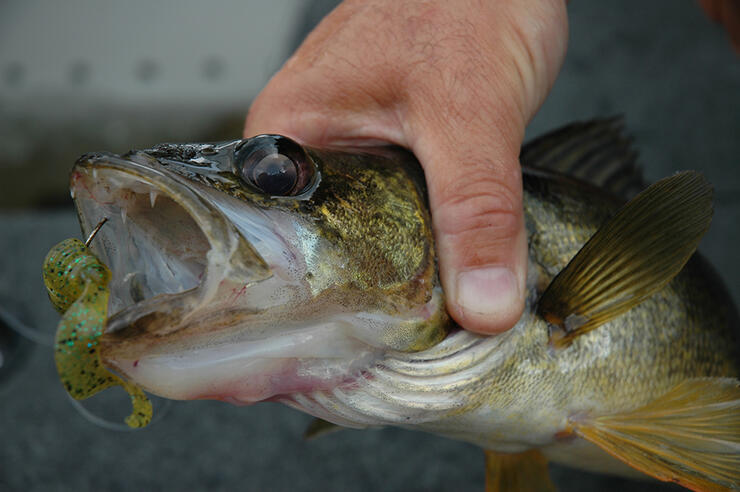
6. Slinging
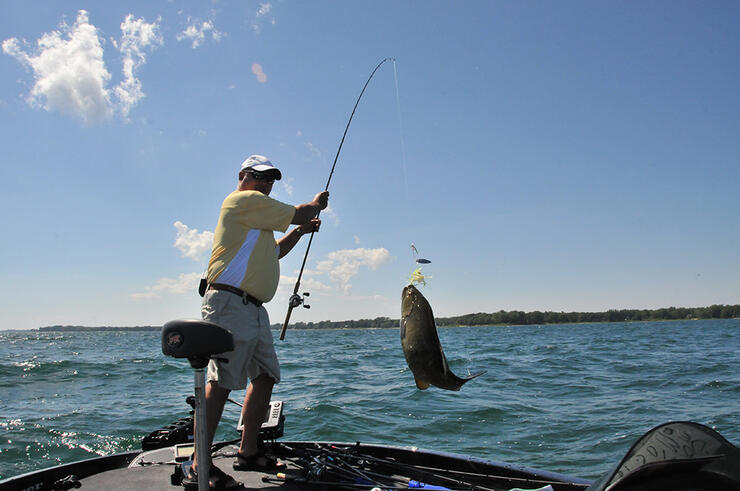
Pros
- Very fast and efficient
- Easy way to get fish into boats, up onto docks or piers, or over shoreline obstructions
- An excellent way to land panfish or smaller gamefish
Cons
- Hooks may pop free and strike an angler.
- Breaking your line is a distinct possibility
- Fish that come unhooked in mid-air may be injured when they land
- Slinging is ineffective with large fish
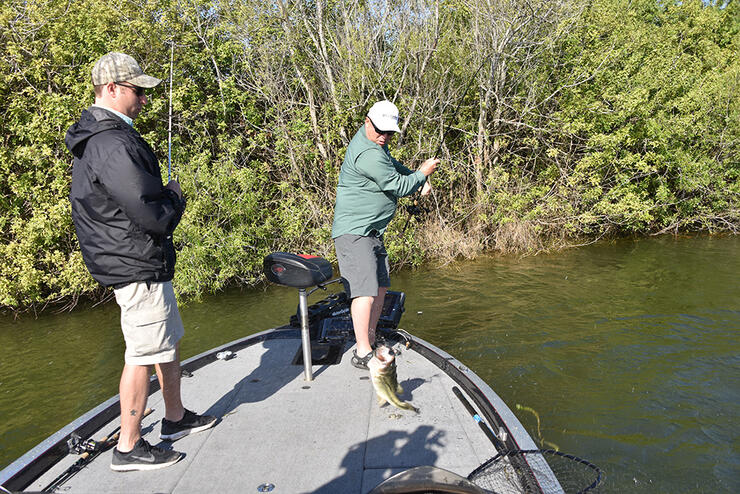
Slinging Tips
- Always have the fish on the surface and moving toward you before you attempt to sling it in
- Try to sling fish slightly to your side rather than directly at your body in case the hooks pull free
7. The Bill Plate Lift
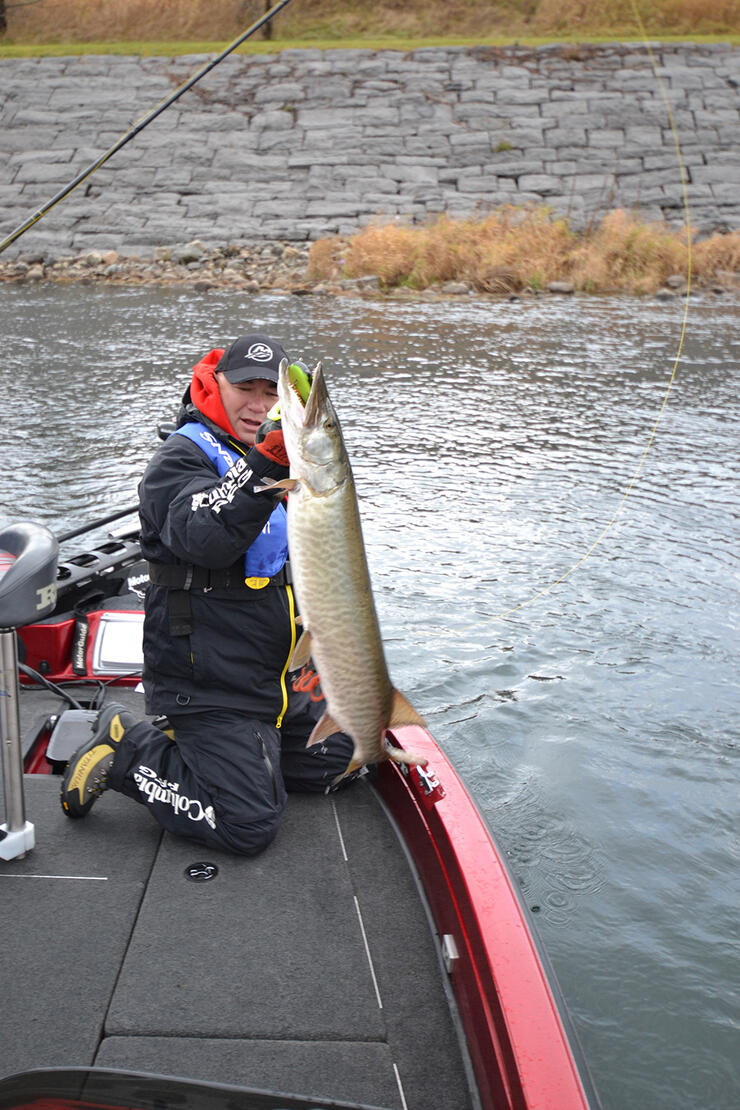
We kept this method separate because, although it looks pretty neat to hoist a fish up by the gill plate, it can cause severe injury to both angler and fish unless it is done correctly. Extreme care must be taken to avoid touching the actual gills, as well as to keep the fish’s gill plate from slicing into your hand or fingers. Anglers who are proficient at handling fish will find that this landing method offers great control, especially with large fish, but it takes skill to execute it correctly.
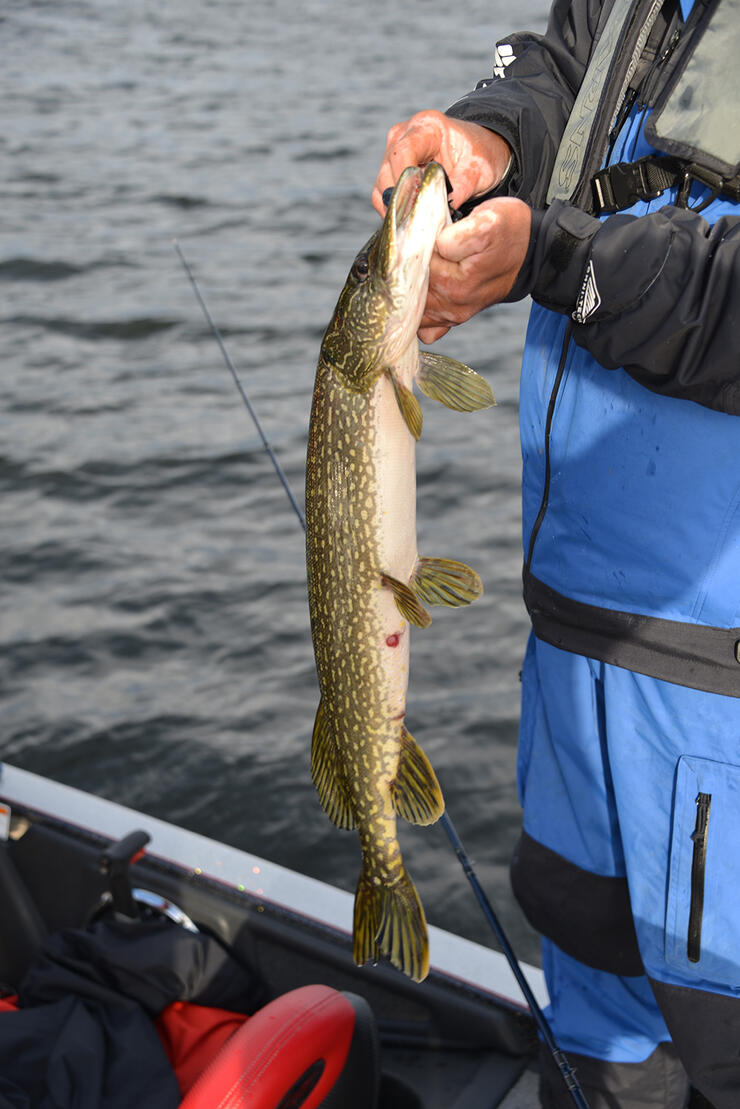
The idea of the gill plate lift is to slide your fingers under the fish’s gill cover and up toward the mouth while keeping your thumb on the outside. When you reach the forward edge of the gill plate, grasp it firmly and lift the fish’s head. At this point, the fish’s body should still be in the water, with only its head out. Remove the hooks, lower the fish back into the water and release it. If you must lift the fish out of the water, use your free hand to support its belly.
Recommended Articles
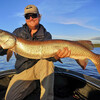
The Eagle has Landed
Big Water, Big Fish
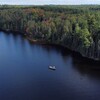
Beaverland Bass on Marten River
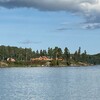
Cedar Point Muskies
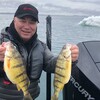
Spring Perch Fishing
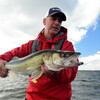
True Colours
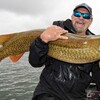
St. Francis Titans

10 Facts About Lake of the Woods
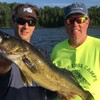
Timber Edge Camps
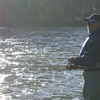
5 Places to Shore Fish
Catching Ontario Walleye
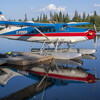
A Guide to Fly-in Ontario Lodges
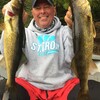
Fishing the Marten River
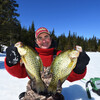
Ideal Christmas Gifts For The Northern Ontario Ice Angler
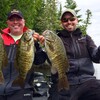
Four Seasons of Bass in Ontario
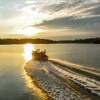
Luxury Meets Remote on Kenora’s Lake of the Woods
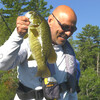
Laurentian Lodge - Something for Everyone!
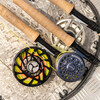
5 Things to Know When Buying Your First Fly Rod
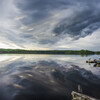
Lac Seul Outpost Adventure
